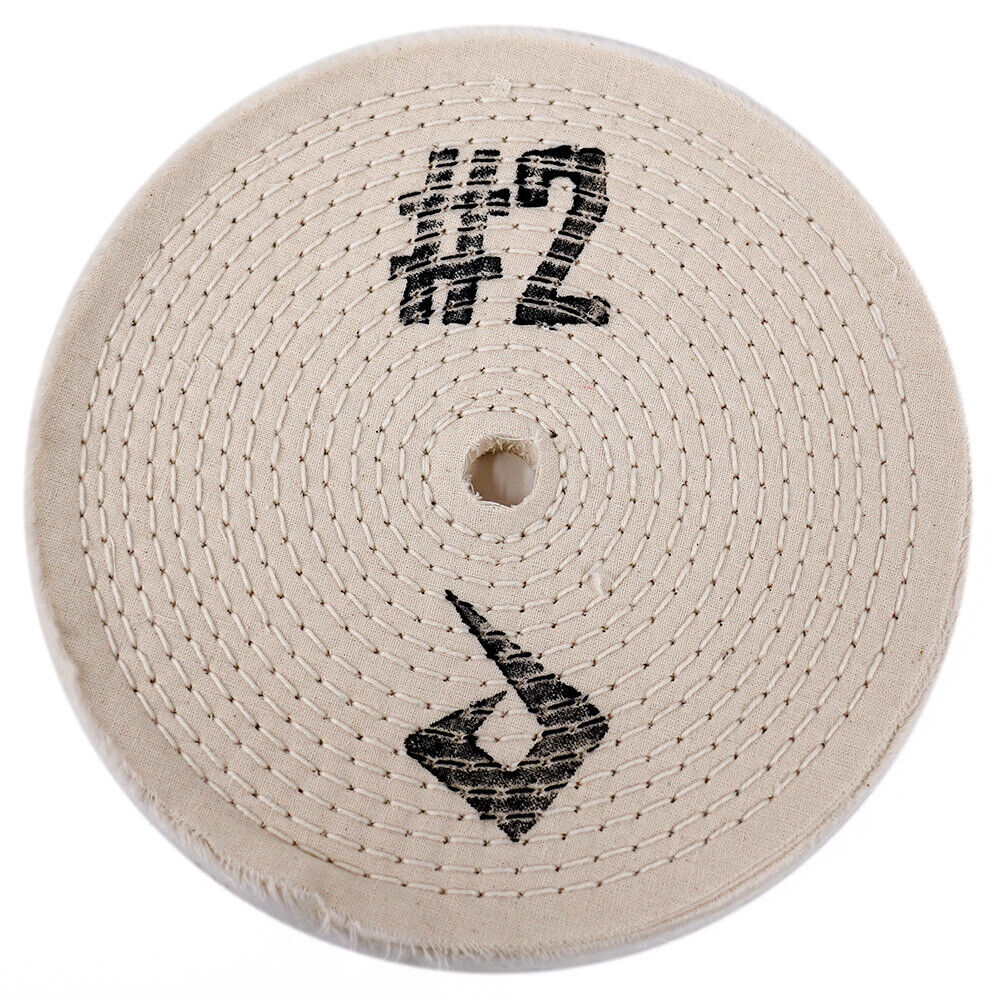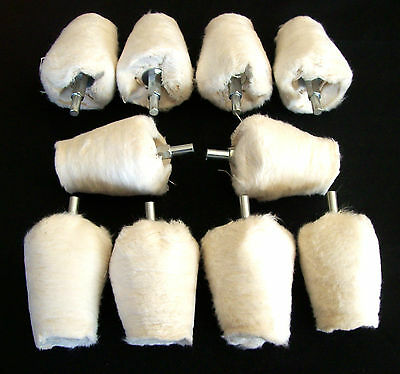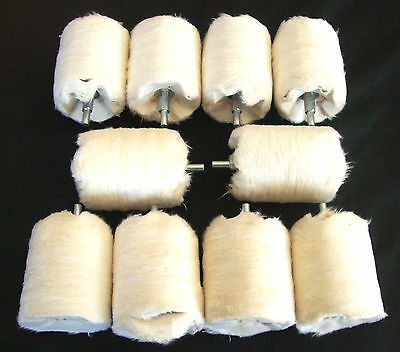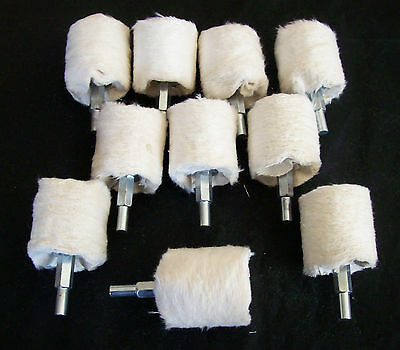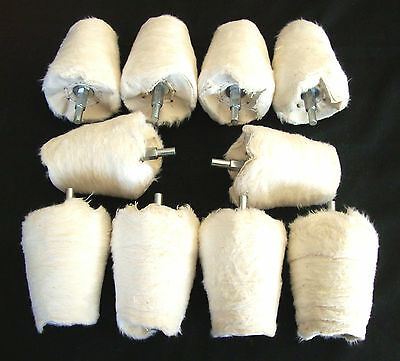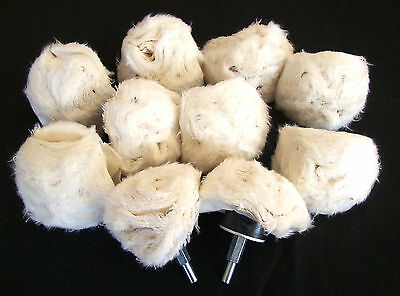-40%
8" Metal Polishing Wheel | Bench Grinder Buffing Polish Cotton Chrome Buff Pad
$ 7.91
- Description
- Size Guide
Description
What Does It Do?Take your parts to the next level with a Pryme Polishing Wheel! If you're going for a mirror finish on your metal part, these are the answer. Must be used with a polishing compound (see our other listings).
How Does It Work?
These polishing wheels mount on a bench grinder / buffing machine and when combined with a compound, they produce a mirror shine. The wheels and compounds work together to polish out scuffs and dullness, resulting in a smooth reflective finish.
Available for machines with a 1/2" (12.7mm), 5/8" (16mm), and 3/4" (19mm) shaft size. Please measure your buffer shaft size before ordering.
Specs
Mounts on bench grinder / buffing machine
8" diameter
1/2" wide
Max RPM: 3600
Available for
1/2" (12.7mm), 5/8" (16mm), and 3/4" (19mm)
buffer shaft sizes
-#1 Polishing Wheel is best used with the Black Polishing Compound for the first stage of polishing on steels and soft metals.
-#2 Polishing Wheel works great in combination with the Green
Polishing Compound as the second stage of polishing on steels. Also pairs well with the Brown Polishing Compound on the second stage of polishing on soft metals such as aluminum.
-#3 Polishing Wheel is to be used with the White
Polishing Compound in the final stage of polishing for steels. Can also be used with the Blue Polishing Compound for the final polishing stage on soft metals.
Keep in mind, if you are looking to polish to a full mirror finish, you will need to do all 3 stages of polishing
wheels
. You cannot go right to the final step and expect a full mirror shine.
Also, if your part has existing scratches or a sand cast finish they will need to smoothed out with flap wheels
.
The flap wheel step can be skipped if your part does not have deep scratches or casting texture.
Polishing Metal At Home With Amazing Results!
Video will open in a new window
Using the eBay App? Paste link into a browser window:
[isdntekvideo]
Intro To Polishing
What exactly is polishing?
Polishing is essentially removing surface scratches and imperfections to the point where the finish is reflective. When a part is dull looking, it has scratches that prevent light from reflecting off of it. The act of polishing is to smooth out these scratches so light can reflect off the part and give you that brilliant shine. This process can be done on metals, such as steel, stainless steel, aluminum, copper, titanium, and brass. Softer materials such as plastic and wood can be polished as well.
What is the process of polishing?
The first step is to remove any dirt, grease, paint, rust, corrosion, or anything on the surface of the part. This can be done with chemical cleaners or abrasive products. The next step is to smooth out deep scratches and scrapes, as well as blend in casting marks or “sand cast.” A part with a sand cast finish will not reflect light since it has millions of dimples on the surface. These need to be smoothed over. The quickest way to do this step is with an abrasive wheel on a buffing machine/bench grinder or die grinder. Once the major scratches are removed, the finer scratches are buffed out. Sometimes these scratches are not visible to the naked eye, and they must be polished smooth with a softer wheel. The wheels used in this step are commonly made from cotton or flannel, and are combined with a compound, a wax like substance. The compound carries the abrasive that helps smooth the surface. There are a few different polishing wheels and compounds that make up this step. Each type of metal uses a different set of wheels and compounds.
How long will a polished finish last?
It all depends on how much the part is being used and how well it’s maintained. A polished part sitting in a garage will need an occasional touch up. However, a part that is exposed to dirt and water and being used weekly will result in scratches and stains, but a weekly hand polish will keep the finish in good shape. A protectant can be applied to help extend the life of the finish however.
What can I do to protect a polished finish?
Certain metals will need more protection than others. Steel is very vulnerable to rust, so it will need protection such as a clear ceramic coating. Magnesium corrodes very quickly, and it will need a coating as well. Other metals that are less prone to rust and corrosion such as stainless steel or aluminum can be left bare, but will still require some upkeep. A liquid polish can be used for a touch up on these metals. If you plan on using the part frequently, a ceramic coating is recommended on all metals.
It is advised that you wear protective equipment while polishing. Some of the compounds and metal particles that are airborne while polishing can be harmful to your lungs and skin over time with no protection. Don’t take it lightly. Wear a dust mask or respirator, safety glasses, and thick gloves. A face shield and shop apron are helpful as well.
Why buy from Pryme?
We stock every item in house, and it's ready to ship today. No backorders, no drop shipping, and no hassle. We understand how important it is to receive orders in a timely and accurate manner. Pryme is 100% American owned and employs hard working Americans.
